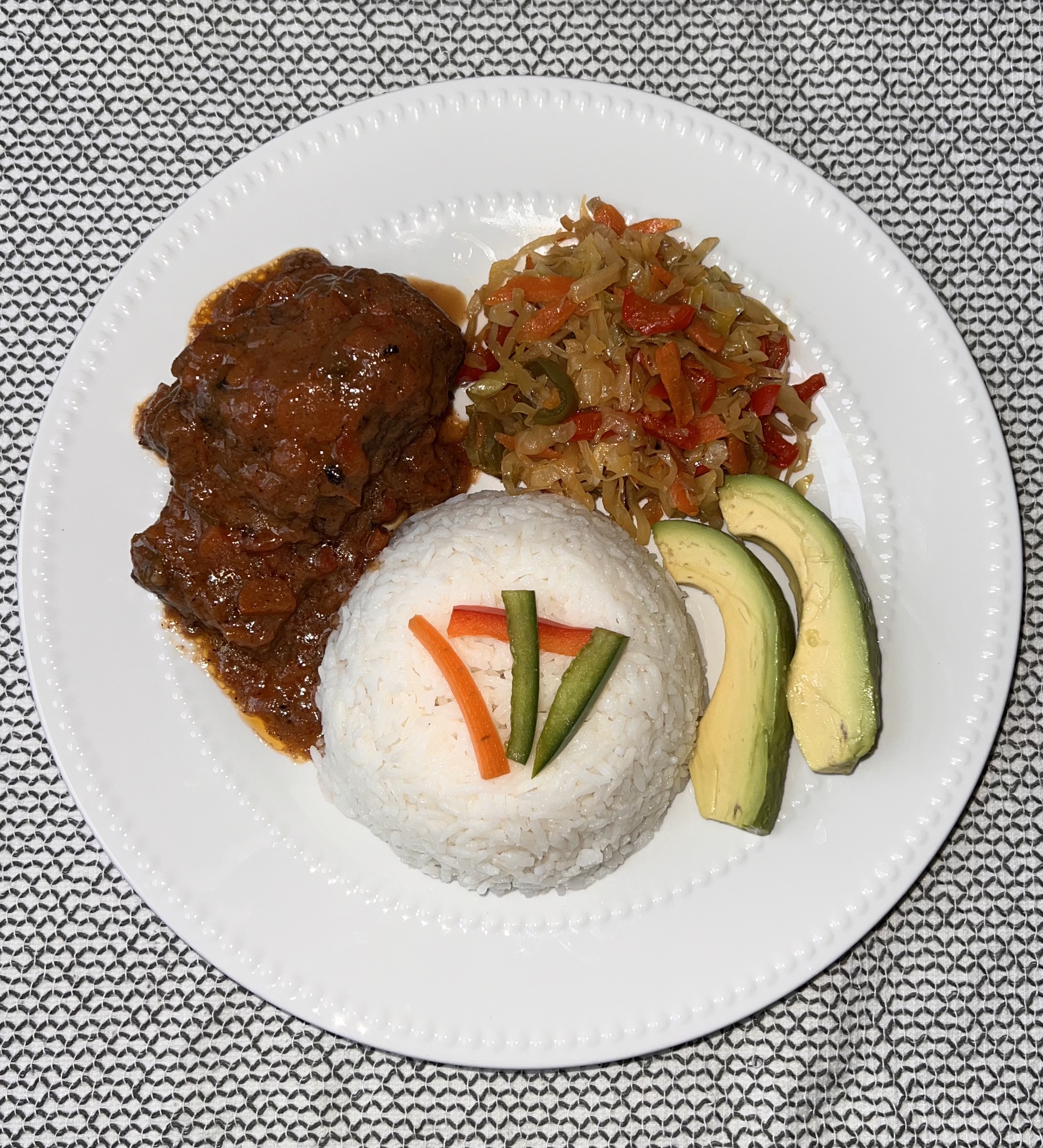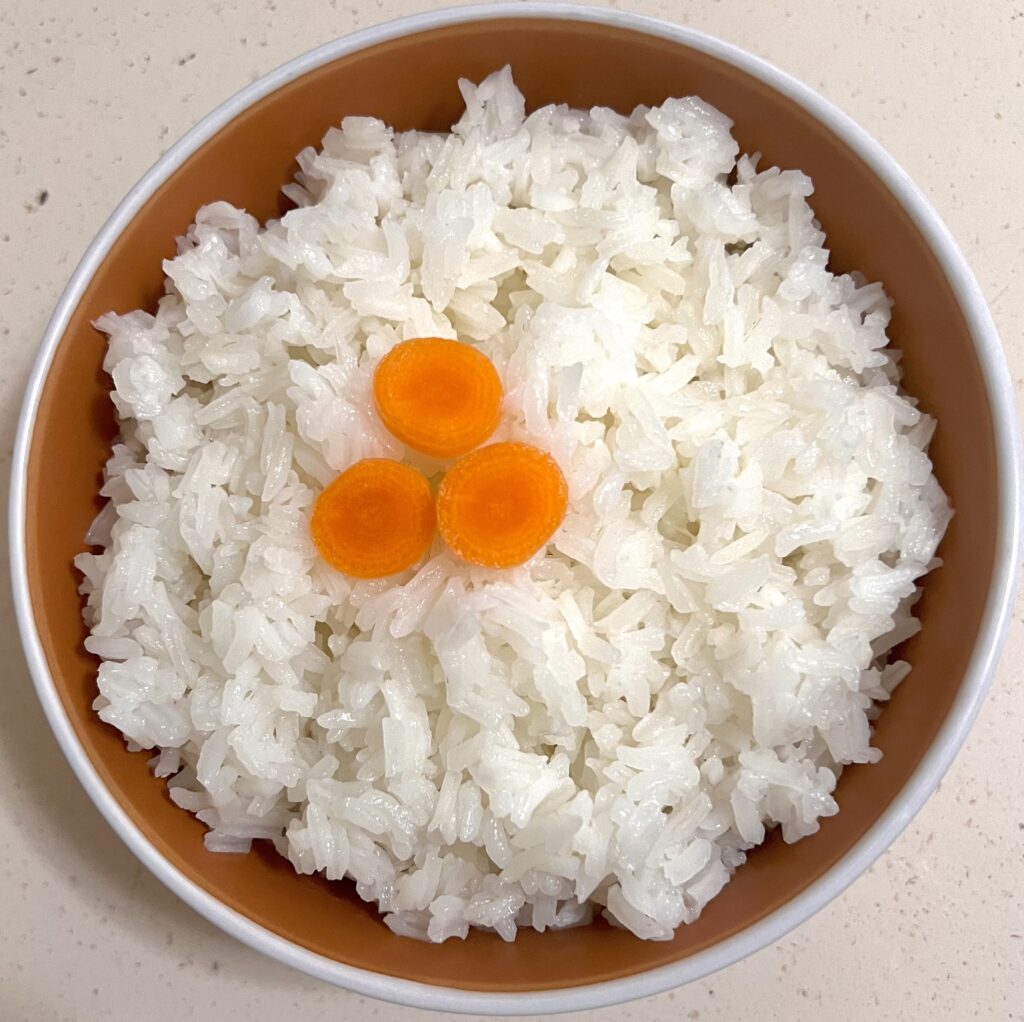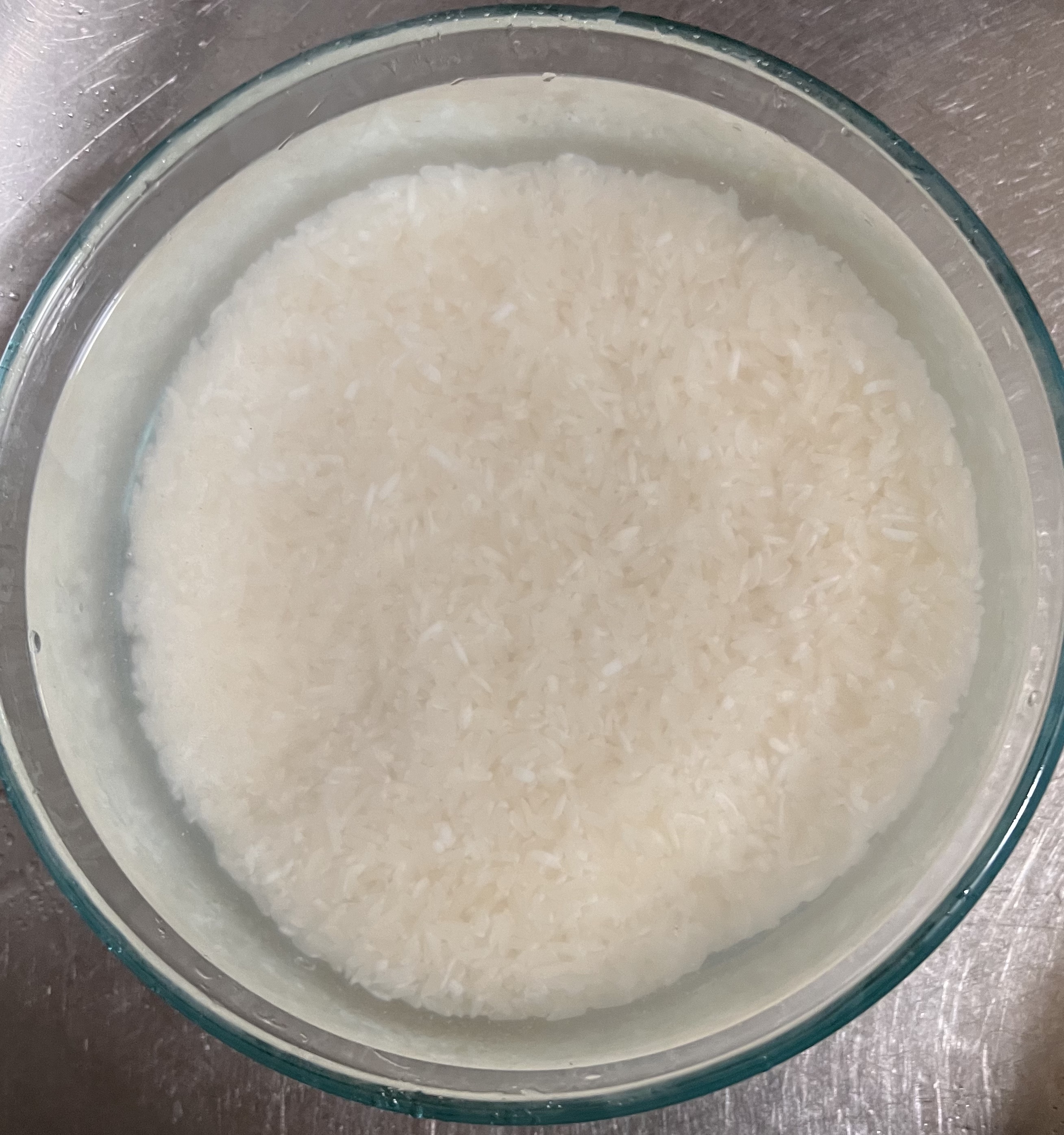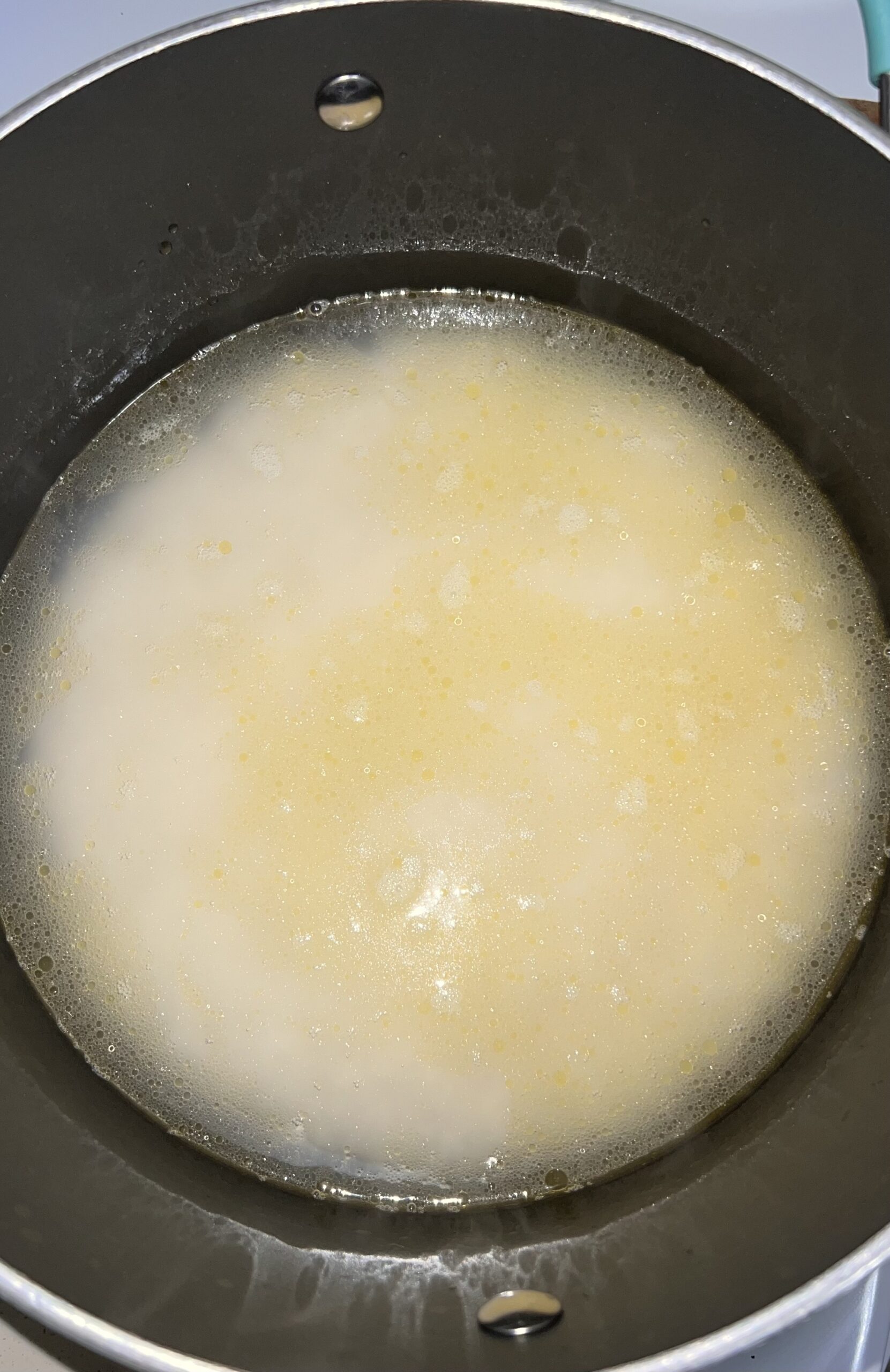This post may contain affiliate links, which means I may receive a commission from purchases made through the links.
I once made white rice for dinner with my roommate back in college and as we were eating, she commented, “I did not know white rice could be this tasty!” She asked to borrow my recipe and I happily gave it to her. As you can guess, that made me super proud and boosted my confidence in my recipe very much. Let’s talk about the tips and tricks for making the most perfect, fluffy, and tasty white rice.

What are the key factors in making the perfect white rice?
Accurate measurements
When cooking rice, you must measure both the water and rice every single time. You can only dare to estimate if you are a lifetime rice-cooking pro. The common rule for these measurements is one part rice, and one and a half or two two parts water. However, I have found that different types of rice may require slightly different measurements. Some will require less water and some, a little more! So, check the packaging of rice for measurement specifications. To be even safer, check your rice regularly as it cooks to see its progression and whether there is a need to make any slight adjustments (more tips in the recipe).
Magical ingredients
White rice can be bland or super tasty depending on what ingredients you add to it. Of course, you shouldn’t add too many ingredients either or it will no longer be plain white rice. My two ‘secret’ ingredients for perfect white rice are butter and olive oil. This combination, together with salt, makes white rice magically tasty. The original flavor and look of rice are enhanced by the aroma and mild flavors of both butter and olive oil. Besides, the rice comes out loose with no clumps whatsoever. Don’t be surprised if you find yourself munching on plain rice after you try this tip.
Type of rice
Did you know that there are over 120,000 varieties of rice in the world? This explains why every time I’ve eaten a rice dish from a different culture, the rice looked and tasted different. With so many varieties available, it is impossible to have a single recipe that applies to all of them. This is why you should treat every variety of rice you cook as a different dish with its own recipe. Also, never mix two different varieties of rice in one pot. In the recipe herein, I used Jasmine rice which is one of the popular varieties where I live. Plus, I love its texture and taste. I also often go for other long-grain rice varieties like Basmati, or the aromatic Pishori rice when I am in Kenya.
Cooking pot
The cooking pot definitely plays a part in how your rice turns out. You can use a rice cooker but if you do not have one handy, a regular pot will do just fine. Go for a heavy, non-stick pot which will allow the rice to cook slowly and evenly. A non-stick pot will ensure your rice doesn’t stick to the bottom and start to burn before it is even fully cooked. Also, go for a pot with a lid because you will need to cover rice as it cooks to retain the moisture and ensure even cooking. Rice that is cooked uncovered will often have uncooked bits on the top level.
Heat level
Never boil rice on high heat, no matter the case (if you are starving, munch on some carrots and just let the rice cook). Even for the best varieties of rice, rushed cooking can lead to a degree of mushiness. In most cases, you will end up with mushy yet undercooked rice which you can hardly salvage, say by adding more water and cooking some more. It will stick to the bottom of the pot and start burning, retain water on top, and still be undercooked. It is always recommended that you cook rice on low heat to allow it adequate time to absorb moisture and soften all through.
Cooking time
Rice is one of those dishes that must be taken off the heat at a certain specific time, not earlier or later. Therefore, measuring both water and rice at the beginning is important so that you know when to take the dish off the stove without undercooking or overcooking it. Depending on the type of rice you are making, you may be required to take it off the heat while it still has some liquid so that it absorbs the rest of the liquid off the stove (precooked rice often requires this). Some varieties need to dry up on the stove before being taken off. For most varieties, you are instructed to let it stand for about five minutes after cooking for moisture to absorb fully before fluffing and serving. Always check the packaging of rice for these instructions to be on the safe side.
With all that said, here is the recipe for perfect white rice that is fluffy and tasty.
Print The Recipe
How to Make The Perfect White Rice
Course: VegetarianCuisine: GlobalDifficulty: Easy4
servings2
minutes20
minutes5
minutes27
minutesThis recipe was made with Jasmine rice.
Ingredients
•Rice – 1 cup
•Water – 1 1/2 cups
•Unsalted butter – 1 tsp
•Olive oil – 1 tbsp
•Salt to taste


Directions
- Measure rice in a cup or a tall glass. Level off on top and pour in a large bowl.
- Rinse the rice in cold water. Repeat this step until the rice is clean (the water should be clear).

- Measure water into a cooking pot using the same cup or glass that you used to measure rice.
- Turn the heat on and bring the water to a boil. Add salt, butter, and olive oil.

- Gently add rice to the pot. Stir, then reduce the heat to low.

- Cover the rice and cook for 16- 20 minutes until all the liquid is fully absorbed and the rice is cooked through. Do not stir again as that will interfere with the cooking and make the rice mushy.
- Take off the heat and leave covered for at least 5 minutes to allow for full absorption of any lingering liquid.
- Fluff with a fork and serve.

Notes
- It is important to rinse rice before cooking to remove dirt and excess dusty starch. The secret to fluffy rice is clean rice. Otherwise, the excess starch will make it gummy, clumpy, and less aromatic in the case of aromatic rice varieties.
- Add rice to boiling water instead of cold water. This will reduce the chances of sticky rice as the grains will stay intact throughout the cooking process.
- One safe thing to do whenever you are cooking a new type of rice is to keep the heat on low and check a few times to see water levels versus the level of cooking. Note that you can always add some water, whether cold or warm, to rice if it has dried up and not yet fully cooked. Just don’t stir it at this point. Gently pour water on top, cover, and keep cooking on low heat. Constant stirring is what messes it up and gives you mushy rice.

Serving suggestions for white rice
- Short ribs stew
- Chicken stew with coconut milk
- Sautéed cabbage with carrots and bell peppers
- Sautéed kale
- Sautéed kale with eggplant and carrots
- Smoked sausage with fresh vegetables

- Lentil stew (recipe link coming soon)
- Bean stew (recipe link coming soon)
- Green grams stew (recipe link coming soon)

Storage of leftover white rice
- You should always fluff your rice while it is hot or at least warm. If it cools down unfluffed, it tends to clump together, and that makes reheating it quite a task.
- Place leftover rice in an airtight container and store it in the fridge. It will be good for up to five days.
- To freeze, place in Ziplocs in single-serve or double-serve batches and flatten out so it is not a huge rock when frozen. That will reduce defrosting time. It will be safe in the freezer for up to two months.
Reheating leftover white rice
You can reheat leftover rice in the microwave or on the stovetop. Allow frozen rice to defrost fully before reheating.
To reheat in the microwave, place refrigerated or defrosted rice in a bowl and reheat for 30 seconds. You can either cover it or leave it uncovered. Repeat for another 30 seconds or until fully hot.
To reheat on the stovetop, place refrigerated or defrosted rice in a cooking pot. Add 2 tbsp of water per single serving and heat on low heat until fully hot. Fluff and serve.














